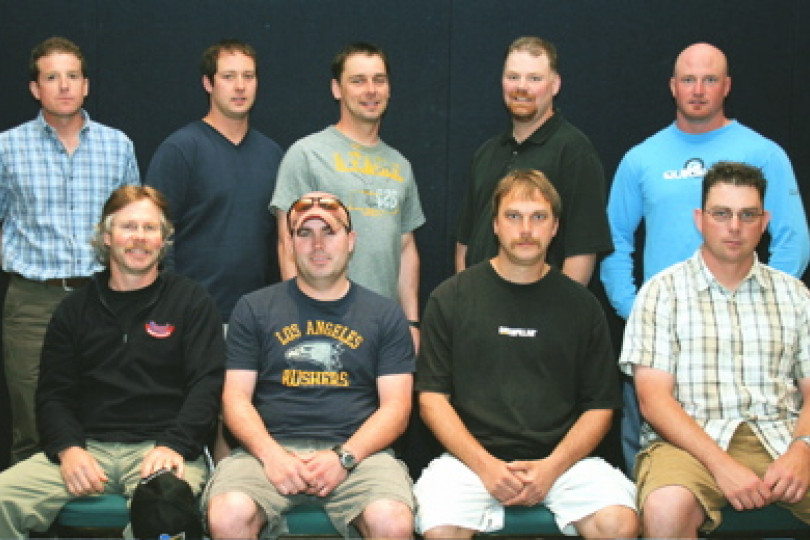Analysis will help members qualify for interprovincial work
NINE BOILERMAKERS have updated a national occupational analysis (NOA) for the Canadian government. The revised NOA describes the trade requirements for a construction Boilermaker. It will be used to update an exam workers take to earn a “Red Seal” that allows them to work in other Canadian provinces.
According to Intl. Rep Richard MacIntosh, NOAs are reviewed about every 10 years. The Canadian government requested that each of the Boilermaker construction lodges send a representative to participate in the review. In addition, MacIntosh and IVP Joe Maloney each recommended a representative on the national level for the workshop. Brad Currie, Gilles Brideau, and Mark A. Mac Neil of Local 73 (Halifax, Nova Scotia); Dave Lewis of Local 128 (Toronto, Ontario); Curtis Booth of Local 146 (Edmonton, Alberta); Doug Shears and Bill Rogers of Local 359 (Vancouver, British Columbia); and Nathan Ebenal and Ted Hryhoruk of Local 555 (Winnipeg, Manitoba), participated in the NOA workshop in Ottawa, Ontario, June 18-22.
Local 555’s Ebenal said he and the other Boilermaker participants took great pride in what they were sent there to do. “I believe the range in age, experience, and personalities all added to some great input,” he said.
The NOA is a base document that lists all the tasks and sub-tasks performed in a trade or occupation, along with the supporting knowledge and abilities required. Other information includes the scope of a given trade or occupation, trends, tools, equipment, and related components.
The Red Seal (the Interprovincial Standards Red Seal Program) was established more than 45 years ago to provide greater ease of mobility for skilled workers throughout Canada. The Red Seal forms a partnership between the provincial, territorial, and federal governments.
Under the terms of the Canadian Constitution, each province and territory has responsibility for apprenticeship training and certification of skilled workers at the journeyperson level. This has resulted in variations in provincial and territorial legislation, thus creating differences within training program content and certification standards.






